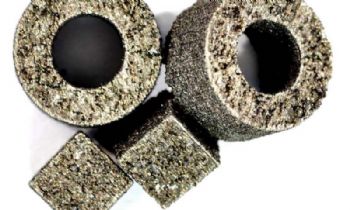
From wind turbines and electric motors to sensors and magnetic switching systems, permanent magnets have many electrical applications.
Their production usually involves sintering or injection moulding, but the increasing miniaturisation of electronics and the more exacting requirements that this places on magnetic components in terms of geometry mean that conventional manufacturing methods are frequently ‘coming up short’.
However, researchers at TU Graz (
www.tugraz.at) — in collaboration with colleagues from the University of Vienna and Friedrich-Alexander Universität Erlangen-Nürnberg (FAU), as well as a team from Joanneum Research in Graz — have succeeded in manufacturing super-magnets with the help of laser-based 3-D printing technology.
Indeed, the team of scientists has now developed the process to a stage where they can print magnets with a high relative density while still managing to control their microstructures.
The initial focus of the research group was the production of strong permanent magnets from the ‘rare-earth metal’ neodymium (or NdFeB); such magnets are crucial components for a variety of applications, including computers and smartphones.
However, in other applications — such as electric brakes, magnetic switches and certain electric motor systems — the strong force of NdFeB magnets is not only unnecessary but also undesirable.
For this reason, Siegfried Arneitz (a PhD student at TU Graz’s Institute of Materials Science, Joining and Forming) is continuing research into the 3-D printing of Fe-Co (iron and cobalt) magnets, which offer a promising alternative to NdFeB magnets in two respects: mining rare-earth metals is resource-intensive and not very attractive from a sustainability standpoint; and the recycling of such metals is still in its infancy.
However, Fe-Co magnets are less harmful to the environment; and whereas rare-earth metals lose their magnetic properties at higher temperatures, special Fe-Co alloys maintain their magnetic performance at temperatures of 200-400°C — and they offer good temperature stability.
Mr Arneitz said: “Theoretical calculations have shown that the magnetic properties of these materials can be improved by a factor of two or three.
“Given the flexibility of shape that 3-D printing offers, we are confident that we can get closer to this goal.
“We are going to continue working on this topic, in collaboration with various other institutes, so we can develop alternative magnetic materials for areas in which neodymium magnets are not necessary.”